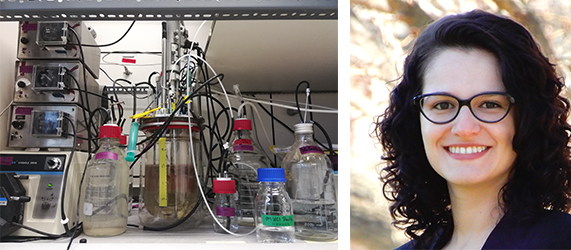!! Due to measurements to cope with the coronavirus disease (COVID-19), this colloquium is canceled.
The bioreactor simultaneously consumed sulfide, methane and ammonium at the expense of nitrate. Anammox bacteria, Candidatus Methanoperedens archaea, Ca. Methylomirabilis bacteria and two proteobacterial groups mostly accounted for such reactions. Metagenomic analysis revealed a novel organism that represented a new family within the Nitrospirae phylum. A high quality draft genome of this new species was recovered, and analysis showed high metabolic versatility. Thus, this new organism was named Ca. Nitrobium versatile. This and related microbial groups were found in diverse environments where sulfur, nitrogen and methane cycling take place. Transcriptomic analyses indicated this organism might couple sulfide oxidation to nitric oxide reduction.
In summary, we characterized a microbial community cycling carbon, nitrogen and sulfur under anoxic, brackish sediment conditions, and identified a novel, globally distributed microorganism that may link sulfur and nitrogen biogeochemical cycling in sedimentary ecosystems. Ongoing nitric oxide addition experiments should further elucidate microbial interactions and the metabolism of Ca. Nitrobium versatile, potentially aiding in future bioremediation of climate change-impacted marine sediments.
Dr. Paula Dalcin Martins is a postdoctoral researcher at Radboud University Nijmegen. She works with Professor Mike Jetten and Dr. Cornelia Welte on carbon, sulfur, nitrogen, and iron biogeochemical cycling in a variety of systems. She obtained her degree of PhD in Microbiology in 2018 at the Ohio State University (Columbus, OH, USA) with her work on methane and sulfur cycling in wetlands. More information about her can be found on LinkedIn and Twitter; her publications are available on Google Scholar.
